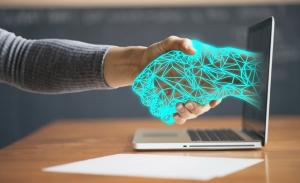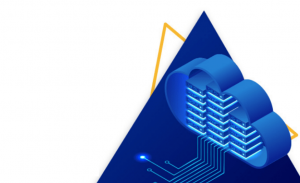In December 2019, the city of Wuhan, in China’s Hubei province, saw multiple cases of a pneumonia-type illness erupt among its citizenry. Later, scientists determined that the cause was a novel coronavirus, with likely zoonotic origins. In the months that followed, the coronavirus, or COVID-19, has mutated and proliferated into a full blown, global pandemic that has brought the world to its knees. In the three months since the first reported case, the pandemic has claimed over 70,000 lives. It is being touted as the greatest human tragedy of the 21st century.
In an attempt to curb the rate of transmissions, nearly every national government in the world has introduced some form of restrictions on individual mobility, whether through nationwide lockdowns and mandatory quarantines, or through strict rules around social gatherings. Businesses have followed suit with work-from-home policies and network monitoring tools. People are encouraged to practice social distancing everywhere they go and work from home as well. Healthcare workers, at the frontlines of the pandemic, have (rightfully) become celebrated heroes of their communities. However, despite people doing the best they can as most stay at and work from home while following social distancing norms, the number of confirmed cases and casualties continues to rise.
While this is foremost a humanitarian and healthcare crisis, it has left the global economy reeling. Even as businesses deploy Business Continuity Plans (BCPs) and enforce work-from-home policies, including HCLTech, the Asian Development Bank estimates the global cost of the COVID-19 pandemic to be as high as USD 4.1 trillion. That is equivalent to 4.8% of the global GDP. But that figure is not final. As the virus continues its deadly spread across economic superpowers like the US, UK, and Europe, the eventual extent of economic damage remains shrouded in uncertainty, even amid stringent social distancing.
Economic exposure and risk, however, is not equitably distributed across all sectors. According to Moody’s recent report - a heatmap that indicates extent of economic risk for several sectors - industries such as manufacturing, automotive services, and logistics are more susceptible to economic volatility. While others such as consumer finance and telecommunications are more immune.
For business leaders, ensuring the safety and health of their workforce is undoubtedly the topmost priority. But what comes next? Are there technologies that can help them overcome the severe business challenges of this unprecedented crisis? Are there things they can do better?
Ever the eternal optimist, my answer is a resounding “yes”.
Businesses Buckle in for the New Normal
They say the hottest fires forge the strongest steel. And for businesses, the COVID-19 pandemic is a test of resilience. While it seems almost inevitable that revenues will take a hit, this is a crucial moment for enterprises across sectors to ensure that growth remains sustainable and customers continue to be delighted. This requires immaculate planning and a strategic roadmap that accounts for further disruptions, while keeping the essentials intact. A difficult task, but it can be done.
Unfortunately, though, what I’ve observed is a tendency among decision-makers to focus more on near-term survival and less on the long-term impacts of uncertainty. In fact, according to a Gartner survey, just 12% of 1500+ respondents believe that they are well prepared for COVID-19, while 26% believe, perhaps naively, that they will remain unaffected by the pandemic.
The lack of preparedness is disconcerting, to say the least. It indicates a state of denial of the situation we are all in – a situation that will undoubtedly make us more reliant on digital technologies than ever before, and organizations that have not made the transition to digital stand to lose the most. The current demand for flexible and remote access to work has strongly emphasized the value of digital channels. But only a minority of global organizations have the adequate digital maturity to do so, and ensure seamless business continuity. For many others, a lack of supporting infrastructure and poorly designed security mechanisms make transitioning to a digital, remote workplace model an insurmountable challenge. In an era where physical interactions can be life-threatening, a high degree of digital maturity might be the lifeboat your company needs.
For us at HCLTech, a truly effective remote working model ensures both a great Employee Experience (EX) and a great Customer Experience (CX), as the two are of course, interlinked. For employees to thrive, organizations need to provide certain essential aspects such as transportable devices, remote collaboration tools, cloud data tools, and reliable connectivity as well. All of these need to be hosted on secure networks. Without the right tools and provisions, organizations are likely to suffer significant drops in productivity, or even costly security breaches, which defeats the entire purpose of business continuity. This is where artificial intelligence and other digital technologies such as machine learning and predictive analytics play a key role.
Artificial Intelligence: The Backbone of the Future Digital Workplace
One of the most important aspects of a remote workplace is real-time IT intervention. A remote workforce relies on various systems that contain multiple nodes that need constant monitoring. A failure at any one these nodes could result in the breakdown of an entire network of collaborative systems. But a lot of remote workers use their personal devices and personal networks to work. And in such a setting, the IT function does not always have the luxury of readily available access as at an on-premises system.
AI allows organizations to bypass this challenge through the provision of workplace optimization software. A workplace optimization tool leverages artificial intelligence, predictive models, machine learning, and other such digital technologies and cognitive functions to enable flexibility, real-time connectivity, enhanced mobility, and workplace automation. Artificial intelligence-enabled workplace automation software leverages enhanced UX and ease-of-use to provide end users with the ability to conduct routine maintenance. As a result, it reduces the burden on IT team members and cuts short mean time to repair (MTTR) issues. This goes a long way in empowering IT operations and observability teams to reduce event noise and prioritize business-critical issues.
Navigating a complex network of remote systems can be a tricky situation for IT team. Worklist prioritization and ensuring that incidents are mapped to the IT support agents are among the most common and pressing challenges. A comprehensive AI-enabled workplace optimization tool can streamline ITSM workflow through ticket triaging. By leveraging an AI-based incident routing system and generating knowledge bases from historical data on issue resolution, organizations can enable an optimally functioning remote work ecosystem. Subsequently, eliminating the ITSM bottleneck can significantly improve enterprise-wide productivity.
The scope of AI-enabled workplace optimization software, however, extends beyond managing and improving IT functions. When applied to departments like finance, the versatile learning algorithms of the software can greatly improve efficacy. By leveraging features such as AI-powered predictive analytics, enterprise finance teams can identify patterns in datasets and develop predictive models, and thereby effectively forecast revenue fluctuations and identify the costs of maintaining business continuity in a COVID-19-stricken ecosystem.
Similarly, AI-based cognitive capabilities can help procurement teams to predict asset volumes and facilitate inventory management and order placements. For engineering teams, AI-based tools can help manage productivity and quality by predicting the specific factors that improve or inhibit them. Engineering firms can also use AI-based tools for proactive defect management. Even when it comes to the human resources function, an AI-based tool can leverage machine learning models to shortlist suitable candidates and facilitate recruitment, saving time and effort for the team.
One of the most significant applications of AI-based tools that have become particularly relevant during the COVID-19 crisis, is security. With the rapid rise in the demand for remote work access, there has been an explosion in the number of threat entry points to an enterprise’s network. While business continuity is paramount, security and IT teams have been struggling to secure employee, client, and business data. By regularly monitoring usage patterns, an AI-based network monitoring tool could help cyber-security teams analyze information on the network to detect anomalies and suggest appropriate corrective measures.
Another handy application of AI is the cognitive virtual assistant. The cognitive virtual assistant is especially adept at facilitating collaborative activities. In a remote work environment, effective collaboration is one of the first things to go. Collaborative workflow suffers from a general decline in efficiency due to multiple systems operating over complex and information-heavy networks, and language and context inconsistencies.
A cognitive virtual assistant helps address these challenges in multiple ways. A VA is capable of mimicking human interactions. This allows it to learn and adapt to a user’s needs using natural language processing (NLP) and machine learning (ML) to interpret inputs and conduct smart conversations. As a result, collaborative exchanges of information occur smoothly, and organizations enjoy a subsequent increase in productivity. Moreover, by integrating the NLP engine with an inclusive cognitive module, a VA gains the ability to interpret context and deliver consistent responses, reduce MTTR, and improve handling time. Finally, VAs have no sign out time. So, they offer a dramatic increase in availability by being accessible 24X7.
HCLTech’s DRYiCE suite of AI-powered solutions helps enterprises achieve a truly disaster-resilient business continuity plan thereby enabling them to operate in a leaner, faster, and cost-efficient manner. Through solutions like DRYiCE Lucy and DRYiCE OptiBot, companies get all the advantages of an AI-enabled digital workplace and more.
Thinking Beyond COVID-19
For most of us, the COVID-19 pandemic is probably the most catastrophic event we’ve witnessed in our lifetimes. And as the situation changes every day, it can be hard to plan for the future in the midst of all the uncertainty. But even as the pandemic pushes businesses to the brink, many organizations are taking the opportunity to revisit their core models and values in order to figure out ways they can become pandemic-proof, or as invulnerable as possible to similar disasters.
One thing is clear, though. The future belongs to hyper-resilient businesses and those that can make the most of flexible work environments. Enterprises need to understand and internalize this new normal. They need to formulate strategies and make intelligent investments in technologies that will help them navigate the market in a post-COVID-19 world. In a manner of speaking, COVID-19 may be the schism between what organizations were and what they have the potential to become.



